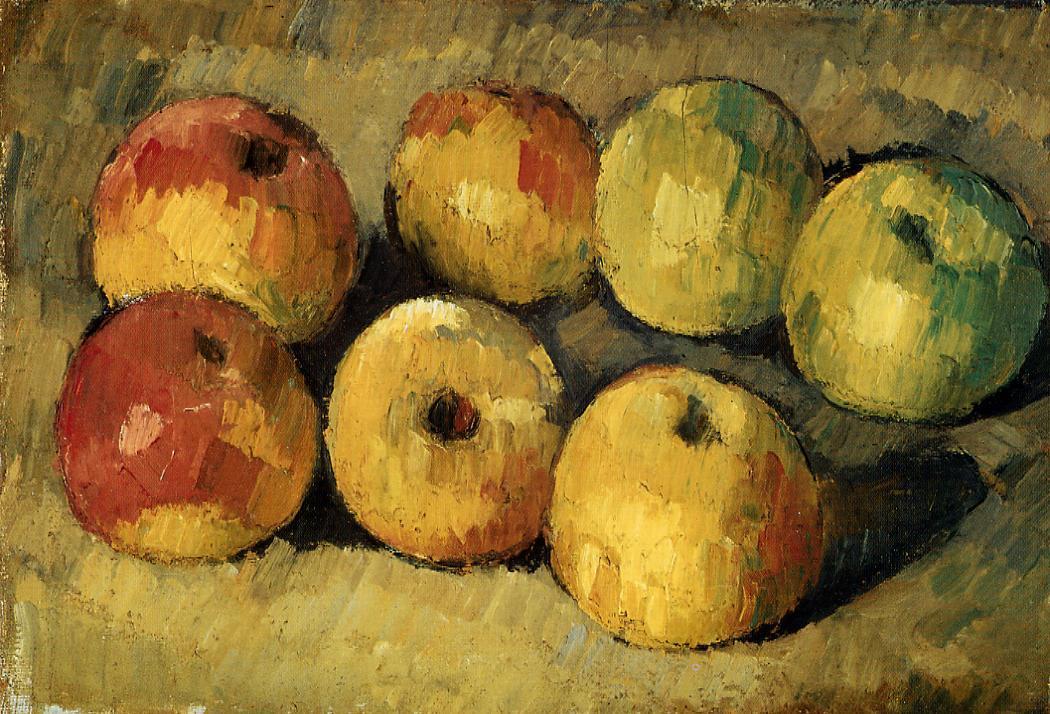| |
| BACK TO THE ARTIST |
| |
Apples, 1877-1878 |
| |
| |
 |
| |
| |
| |
| Details |
|
|
Description |
| |
|
| Artist |
Cézanne, Paul |
The apples of Cezanne, which, like his Bathers and Mont Sainte-Victoires , have come to functions as a kind of iconographic moniker comparable to Fantin-Latour’s bouquets and Degas’s dancers, first appeared in his work in the 1870s.Absent from the still lifes of the previous decade, they suddenly began to proliferate, piling up in compotiers, judiciously distributed over tablecloths, or captured as it by chance on the corner of a table. But, in addition to the more “symphonic” of these works, in which the painter-demiurge depicted complex domestic geographies of his own devising, he produced a few canvases representing only isolated fruit. These can be viewed as studies for more ambitious pictures in which the artist examined his subject from every angle, thoroughly perusing their globular forms, seemingly simple, in reality quite complex; in short, as visual exercises in which he practiced his tonal scales carefully gauging the effect produced by juxtapositions of greens, yellows, and reds. Alternatively, they can be regarded as self-sufficient little pictures that , like Manet’s Asparagus, deliberately reject the contrivances visible in the larger works to showcase motifs so simple as to border on abstraction.
The” painter” of apples saluted by Thadee Natanson was a discovery of the 1890s; in 1891 Joris-Karl Huysmans, in his inimitable voice praise these “apples that are brutal, rugged , built up with a trowel, abruptly subdued with the thumb,” and that when viewed up close – perhaps he had the Cambridge still life in mind – are “a furious pugging of vermilion and yellow, of green and blue.” The apples were to win over a surprising admirer at the Vollard exhibition of 1895: none other than Degas, who , according to Pissarro (apparently startled by this development), was seduced by “the charm of this refined savage nature.” Two month later Degas expressed his enthusiasm in another way, acquiring several works by the artist in January 1896 – including this little canvas, entitled by him “Apples green, yellow , red” – for the museum he was planning to establish. |
| |
| Date |
1877-1878 |
| |
| Institution |
Fitzwilliam Museum at the University of Cambridge |
| |
|
| Medium |
Oil on canvas |
| |
| Dimensions |
19 x 27 cm |
| |
| |
| |
| |
| |
| |
| |
| |
| |
| |
| |
| |
| |
|